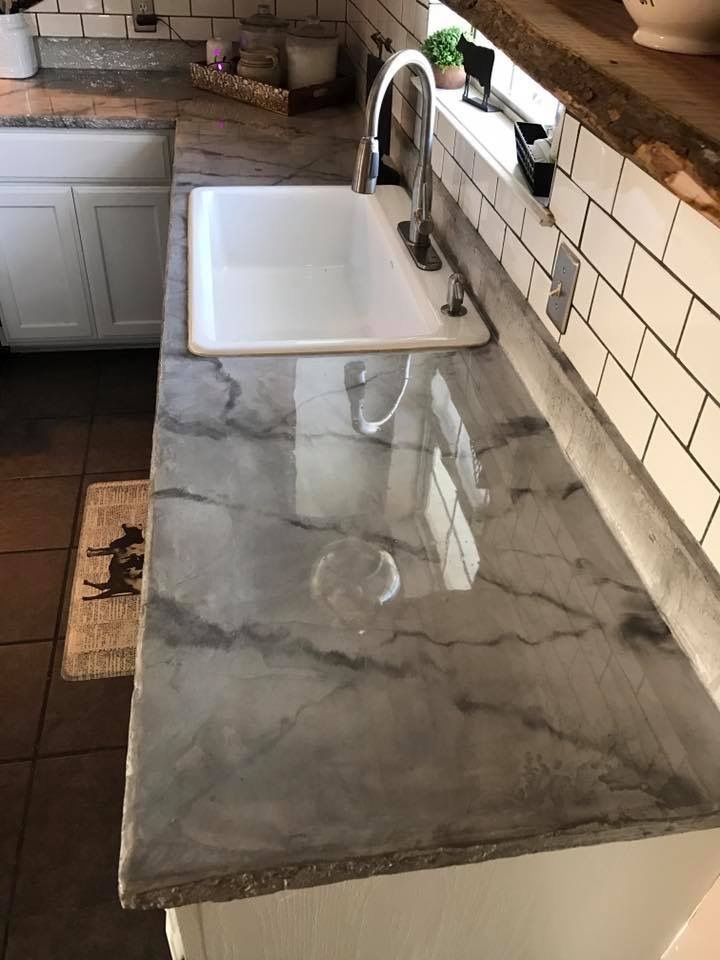

Sometimes an appropriate lacquer thinner, acetone, or solvent is even needed to rid the surface of hard-to-clean substances. For favorable adhesion, the surface needs to be sanded and cleaned of any debris, dust, chemicals, oils, wax, and grease. Each surface (such as Formica, concrete, quartz, Corian, granite, tile, or laminate just to name a few) will have different preparation requirements to adequately prepare them.

Failure to prep your substrates will almost certainly lead to an unfavorable project outcome and premature peeling, cracking, and delamination of your epoxy. Incorrect Surface PreparationĪppropriate surface preparation of your existing countertops is a critical part of the process. This will require more epoxy and more time which can be costly in both time and money. Should clumps emerge, you may need to apply a flood coat to seal the top. Proper mixing will ensure that there is no unmixed resin or resin clumps that will cause soft, tacky, and uncured areas in your countertop. It is recommended to use a clean paint stick to mix by hand rather than a drill paddle as the high agitation can cause bubbles to form in the mixture. Rushing the mixing process can be disastrous. If you make a misstep in your mixing process it can result in your epoxy hardening too quickly or slowly, or in the worst-case scenario, it may not harden at all. It is important not to measure the liquid using a scale as the hardener and resin have different consistencies and will have different weights for the same volume.

Most buckets that epoxy is sold in have measurement markings on them to help with mixing the correct quantities. To achieve a satisfactory and durable finish, the proper ratio should be 1:1. After your pour is complete is best to maintain this ambient temperature for 24 hours to allow for a complete curing process. On the contrary, if the ambient temperature becomes too warm, it can result in your epoxy curing quicker than anticipated and will allow significantly less time to work and manipulate your epoxy. If the room temperature is lower, the countertops will remain soft instead of curing or hardening properly. It is best to set the room temperature between 70-75 degrees Fahrenheit for 48 to 72 hours before your epoxy application. The correct room temperature (between 70-75 degrees Fahrenheit) will help the surface achieve the optimal temperature for your pour. Incorrect Room TemperatureĪcclimating your epoxy and maintaining the correct room temperature is a key facet when working with epoxy. Pouring epoxy can easily be considered “art” and it can take many years to “perfect the pour” and be able to remedy any issues quickly and effectively as they arise.

#Epoxy countertops over tile professional#
It would be beneficial to watch and learn from professional epoxy installers first before attempting to DIY. There are several crucial steps to follow for a successful outcome and shortcuts are not an option. Most DIY epoxy countertop mistakes happen as a result of a lack of experience in pouring epoxy. contact Renew Surfacing, Inc.) DIY Epoxy Countertops Can Go Wrong Pouring Here are some common DIY epoxy countertop mistakes. Before you choose to embark on a DIY epoxy project keep in mind that things can and do go wrong and can end up costing you more money in the long run. It is best to understand how and why these mistakes happen so you can prevent them from occurring when installing an epoxy countertop in your kitchen or bathroom. It can happen to the best of us DIY-ers and professionals alike. While epoxy is relatively easy to use, there are many things that can go wrong with do-it-yourself epoxy projects.


 0 kommentar(er)
0 kommentar(er)
